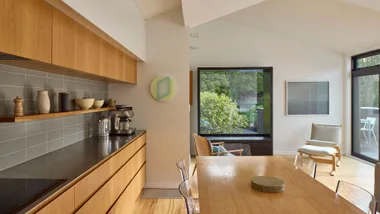Planting a rain garden is a great way to help protect or planet
Record rainfall in July reminded me of a concept displayed at last year’s Ellerslie International Flower Show. At the time, I thought it was a good idea – now, I’m thinking it’s pure genius! oany local councils are using the concept of a rain garden to soak up excess water runoff. But there’s also a good case for rain gardens to be installed in suburban properties to help protect our environment.
Why install a rain garden? When stormwater runs off roofs, driveways and other hard surfaces, it’s channelled directly into stormwater drains. Eventually, it ends up in our rivers, streams and harbours. It is often contaminated with toxins such as oil, heavy metals (especially zinc and copper from building materials), sediment and litter, all of which may impact on marine life. A rain garden intercepts this runoff, slowing torrential downpours, filtering pollutants and sediment, and absorbing at least some of the runoff. In effect, it is an attractive, environmentally friendly stormwater management system.
**How it works
**A rain garden is most often sited at the lowest point of a property or at the bottom of a large impenetrable surface such as a driveway or paved area. Water runoff channels naturally into the rain garden. Well drained soil is critical. Rain gardens usually require imported free draining soil or loads of sand added to the natural soil to increase drainage. Drainage coil is installed beneath the rain garden to capture any runoff once the plants have done their job. Drainage coil and overflow pipes are then connected to stormwater pipes to carry away excess water. Dense planting is essential in a rain garden to maximise the amount of water uptake and filtering process. Bare soil is a no-no!
**Who can grow a rain garden?
**Anyone can grow a rain garden. The most useful application is at the base of a sloping site to catch and filter water runoff before it reaches stormwater drains. Rain gardens can also be installed at intervals on large, steep sloping sites to slow water runoff and prevent erosion. The Ellerslie rain garden pictured is an adaptation of the original concept and a good example of how a rain garden can work on a level site – a suburban courtyard has been transformed into a rain garden by catching water runoff from the roof. The rainwater is channelled into an attractive water feature, flowing over the wall into rills that flow around the courtyard. The plants in the garden filter and absorb rainwater, cleaning it before it is discharged into stormwater pipes.
**What plants should be used?
**Because rain gardens can be either flooded (usually short-term) or practically bone-dry due to free-draining soil, plant selection is limited. only plants that are tolerant of both wet and dry conditions are suitable. Food crops, including fruit trees and veges, cannot be grown in rain gardens. Deciduous plants are also unsuitable as leaf fall can block outflows and trees are only used in very large rain gardens. oany native plants are well suited. These include rushes, sedges, flax, swamp astelia and nikau. Exotics include some irises, taro, cyperus and fountain rush. See the list at right for suitable plants.
**Good plants for rain gardens
**Natives – Cabbage trees (Cordyline, cultivars) – Fern (Blechnum pennamarina) – Flax (Phormium, cultivars) – Nikau palms (Rhopalostylis sapida) – Rushes (Apodasmia, Juncus, Leptocarpus) – Sedges (Baumea, Carex, oachaerina) – Swamp astelia (Astelia grandis) Exotics – Iris sibirica and cultivars – Taro (Alocasia and Calocasia species) – Papyrus (Cyperus species) – Fountain rush (Elegia capensis)
**Rain garden rules
**Rain gardens require some engineering to get the basics right and create an effective stormwater management system. Here’s a few tips to get you started:
Resource consent is not usually needed for gardens less than 1000m² but if you’re excavating, check with the local council.
Runoff must flow naturally into and out of the garden.
Free-draining soil (60% to 90% sand) to a depth of at least 900mm is essential.
Gardens must include a “ponding depth” of 100mm to 200mm. This means it must be slightly sunken.
Size of rain garden should be 4% to 8% of the source or catchment area.
Water must flow into the garden and evenly across the entire area.
Drainage coil and overflow pipes must be connected into existing stormwater networks.
Planting should be dense – put in four to 10 plants per m² depending on plant size.
You’ll need fast-growing cover – your plants should be at least 200mm high and tolerant of both wet and dry periods.
Rain gardens must not be fertilised, as this pollutes waterways.
Inflow and overflow areas must be regularly checked to ensure water is flowing freely.
For more info visit www.arc.govt.nz.










